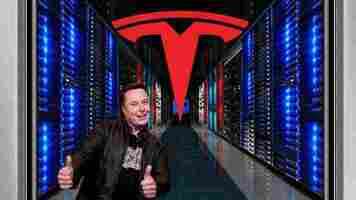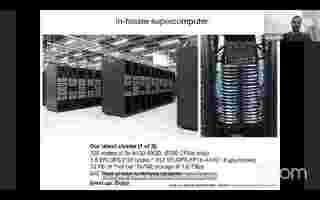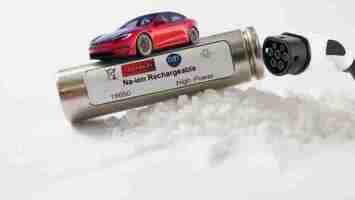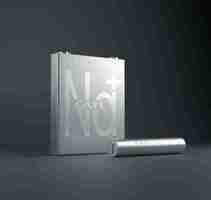We have Tesla’s new supercomputer to blame for its Autopilot tech switch
Tesla announced last month that it’s ditching radar sensors f rom its Model 3 and Model Y EVs for a camera-based autonomous driving system, called the Tesla Vision – but just for the North American market.

Tesla’s move made absolutely no sense and it even cost the company the safety recognition by the National Highway Traffic Safety Administration (NHTSA). But new details from the company’s Senior Director of Artificial Intelligence, Andrej Karpathy, shed at least some light into the automaker’s choice.
During his presentation at the 2021 Conference on Computer Vision and Pattern Recognition on Monday, Karpathy revealed that the reason behind the vision-only autonomous driving approach is the company’s new supercomputer.
Tesla’s next-gen supercomputer has 10 petabytes of “hot tier” NVMe storage and runs at 1.6 terrabytes per second, according to Karpathy. With 1.8 EFLOPS, he claimed that it might well be the fifth most powerful supercomputer in the world. Simply put, it apparently has insane speed and capacity.


Regarding its function, Karpathy commented:
The supercomputer collects video from eight cameras encircling the vehicle at 36 frames per second, which provides tremendous amounts of information about the environment surrounding the car.
Elon Musk has been teasing a neural network training computer called “Dojo” for some time now.
But Tesla’s new supercomputer isn’t Dojo, just an evolutionary step towards it, and Karpathy didn’t want to elaborate on the company’s ultimate computer project.
Overall, we can now grasp better why Tesla turned to a camera-based system for its Autopilot.
But even though the supercomputer’s abilities are impressive, I feel that the company took a big leap of faith, given that the neural network which collects and analyzes image data is still in an experimental stage. What’s most worrisome is that this experiment relies on actual human drivers, with unknown safety measures for them.
If you’re interested in watching Karpathy’s full presentation, you can find it below.
Do EVs excite your electrons? Do ebikes get your wheels spinning? Do self-driving cars get you all charged up?
Then you need the weekly SHIFT newsletter in your life. Click here to sign up .
3 reasons why sodium-ion batteries may dethrone lithium
Lithium-ion batteries have played a vital role in the development of electric vehicles and we love them for that. But at the same time, lithium is expensive to produce, unstable in high temperatures, and a finite resource whose mining often comes with supply chain problems.

Battery researchers and manufacturers have been assiduously searching for a more sustainable replacement. One intriguing alternative they’ve discovered is another chemical element: sodium.
Lithium and sodium are neighbors in the periodic table, which basically means that they offer similar properties and can both be used as charge carriers in the battery cell.
However, each sodium ion is larger than an equivalent lithium ion. As a result, battery researchers have struggled to produced an anode — the battery’s positively charged electrode/terminal — that can absorb enough sodium ions to give a sodium-based battery cell the energy density required to power an EV.
Plus, lithium is the least dense metal known to science, which makes it by default lighter than sodium. Given that weight is a crucial factor in an EV’s energy consumption and, in turn, range, the heavier sodium-ions have seemed like a less suitable option.
1. It’s abundant
Sodium is a common element that’s usually mined from soda ash, but it can basically be found anywhere, including in seawater — and we have plenty of it.
According to the Faraday Institution , sodium is the seventh most abundant element and 1,200 times more common than lithium , while it’s more evenly distributed around the world.
2. It’s cheaper
Sodium’s abundance naturally makes it a less expensive option. It also costs less to extract and purify it.
Plus, sodium-ion cells can be made with ample metals such as iron and manganese. In contrast, lithium-ion batteries require cobalt, a metal with limited geological reserves that’s also the most expensive part of the battery, priced at approximately $28,500 per ton.
In addition to that, sodium-based cells can be manufactured using existing battery equipment, so they wouldn’t require costly redesigns to be put in production.
3. It’s safer
Sodium batteries not only perform better at a wider temperature range (especially in cold environments), but are nonflammable and there’s no thermal runaway — which can usually cause lithium-ion batteries to catch fire.
Safety risks are also reduced during transit. Manufacturers can transport sodium-ion batteries with the battery terminals directly connected and the voltage held at zero.
In contrast, lithium-ions batteries need to be transported in a partially charged state to avoid the dissolution of the copper current collectors they contain, which in turn increases the risk of fire.
In July, Chinese battery company CATL unveiled its first-generation sodium-ion battery, with plans to ramp up the sodium supply chain by 2023.
CATL’s product is expected to have an energy density of 160Wh/kg and will take 15 minutes to reach 80% of its charge. That’s actually on par with lithium-ion batteries currently on the market, ranging from 140 Wh/kg to 240Wh/kg in the highest-end types.
The company also plans to use its AB battery pack solution which will integrate both sodium-ion and lithium-ion cells.


All in all, sodium-ion batteries can offer three crucial advantages EV manufacturers and consumers are looking for: sustainability, lower cost, and increased safety.
They might still be inferior to their lithium counterparts in weight and energy density, but I’m optimistic that further research will make them a viable replacement.
HT — Wired , Just Auto , Grepow , Bloomberg
Why Microsoft’s self-driving car strategy is quietly brilliant
Self-driving car startup Cruise has received more than $2 billion in a new round of investment from Microsoft, General Motors, Honda, and institutional investors, according to a joint statement by Cruise, its owner GM, and Microsoft on Tuesday. The investment will bring the valuation of Cruise to $30 billion and make Microsoft an official partner.

Per Tuesday’s announcement : “To unlock the potential of cloud computing for self-driving vehicles, Cruise will leverage Azure, Microsoft’s cloud and edge computing platform, to commercialize its unique autonomous vehicle solutions at scale. Microsoft, as Cruise’s preferred cloud provider, will also tap into Cruise’s deep industry expertise to enhance its customer-driven product innovation and serve transportation companies across the globe through continued investment in Azure.”
So, Cruise will get the much-needed funds to conduct research and (possibly discounted) access to Microsoft’s cloud computing resources and move closer toward its goal of launching a purpose-built self-driving car.
But in the long run, Microsoft stands to gain more from the deal. Not only will it get two very lucrative customers for its cloud business (Azure will also become GM’s preferred cloud provider, also per the announcement), but when seen in the broader context of Microsoft’s self-driving car strategy, “Cruise’s deep industry expertise” will possibly give Microsoft a solid foothold into the future of the still-volatile self-driving car industry.
At a time where most major tech companies are interested in acquiring self-driving car startups or launch their own initiatives, Microsoft’s hands-off approach can eventually turn it into an industry leader.
Self-driving cars from the AI business perspective
Self-driving cars can be viewed as a specialized case of artificial intelligence business . Every company running on AI algorithms—namely machine learning —must bring together a few key pieces to have a viable business model:
Algorithms : The company must either use existing machine learning algorithms or research new architectures that suit the problem.
Data : The company must have a sound infrastructure that consolidates disparate data sources. It must also have ways to collect and store fresh data from customers to continue to maintain and tune its models and maintain the edge over competitors.
Compute resources : The company will need access to large compute clusters and specialized hardware to train and update its machine learning models and to provide cloud-based inference at scale.
Talent : The company needs data scientists, data engineers, and machine learning engineers to develop and maintain AI models and research new techniques.
Microsoft already has a solid AI stack and a full range of products that fit in this category. For instance, the company’s computer vision service runs on machine learning models developed by the company’s engineers. The models were trained using the company’s vast store of image data. As customers use the AI service, they generate more data and labels to further enhance the machine learning models. Finally, Microsoft’s Azure cloud has specialized hardware to both train the models and deliver them at scale and in a cost-efficient manner.
Many companies use Microsoft’s Cognitive Services APIs to integrate AI capabilities into their applications.
Microsoft can also engage in any kind of venture that builds on this AI stack, such as launching its own end-to-end computer vision applications or hosting advanced natural language processing platforms such as OpenAI’s GPT-3 .
When it comes to self-driving cars, however, a few new components are added to the mix:
Autonomous driving hardware : The company must develop lidars, sensors, cameras, and other hardware that enable self-driving features .
Vehicle : The company must either manufacture its own vehicle or find a manufacturing partner to integrate the self-driving car gear.
Self-driving cars introduce new manufacturing and legal challenges that would challenge a company that is mainly in the software business. There are a few ways companies overcome these challenges.
How does Microsoft’s self-driving car strategy fare against others
The traditional way to enter an emerging market is to either build it yourself or buy it from someone else.
Google developed its own self-driving car lab in the late 2000s, which it later renamed Waymo. Waymo develops AI software and hardware for autonomous driving. Google does not manufacture its own cars and relies on the vehicles of other carmakers such as Toyota, Audi, Fiat Chrysler, and Lexus to test and deploy its technology.
But Google had a head start, which allowed it to create its own self-driving car unit from scratch. Other companies that entered the field later made up for their tardiness by acquiring self-driving car startups. Examples include Amazon’s acquisition of Zoox and Intel’s acquisition of MobileEye .
Tesla is among the few who have a complete self-driving car stack. The electric carmaker has autonomous driving technology integrated into its electric vehicles. It also has millions of sold cars that are constantly collecting fresh data to further enhance its algorithms. Apple also has plans to manufacture its own self-driving car , though the full details have yet to emerge.
Microsoft approach to the self-driving car industry is different.
“We partner across the industry. We are not in the business of making vehicles or delivering end mobility as a service offerings,” Sanjay Ravi, General Manager of Automotive Industry at Microsoft, wrote in a blog post that laid out Microsoft’s automotive strategy in 2019.
Instead of acquiring startups and test-driving cars in cities, Microsoft has a program to support self-driving car startups by providing them engineering support and discounted access to cloud services. These startups can become potential Microsoft partners in the future. In October, Microsoft entered a partnership agreement with Wayve , a London-based developer of self-driving car software that was part of Microsoft’s start-up program. Cruise is the second self-driving car company Microsoft is partnering with. Microsoft also has partnerships with several carmakers to provide them with cloud services.
Why Microsoft’s strategy can succeed
The problem with the self-driving car industry is that we still don’t know when we will get there. Every year, we’re missing new deadlines on having fully autonomous cars on roads. But like the quest for artificial general intelligence , we know that we have a bumpy and potentially long road ahead.
We also don’t know what the final technology will look like. Tesla CEO Elon Musk believes that computer vision alone will be enough to reach full autonomy . Other companies are banking on lidar technology becoming more affordable and stable in the future. Car design will also undergo changes as the industry matures.
Another issue is the regulations of self-driving cars. Will self-driving cars be allowed to share the road with human drivers? Will they only be allowed in specific, geo-fenced areas? How will culpability be determined in case of accidents?
Every one of these areas can undergo fundamental changes, and those changes will be decisive in determining which startups will flourish and which collapse in the coming years. Interestingly, the one thing that will likely remain constant is data, cloud, and software, the three areas where Microsoft already excels at.
And this is why Microsoft’s strategy of not acquiring startups will protect the company against the industry’s volatility.
For one thing, partnership is a flexible format that is well suited for the quickly evolving self-driving car space. Entering a partnership is faster and more affordable than a full acquisition (compare the $2 billion partnership with a full $30 billion acquisition of Cruise, if it was possible at all). At the same time, leaving a partnership is much easier than having to scrap and sell an entire self-driving unit .
Meanwhile, small investments allow Microsoft to cast a wider net and become engaged in a diverse range of solutions through its self-driving startup accelerator program and its partnership agreements. Already, the roster of startups included in Microsoft’s self-driving startup program represents a diverse set of research areas and directions. Any of them can become breakthrough solutions in the future. While Microsoft supports these startups, it will also tap into their industry expertise and develop its own in-house talent and tools. This will be very crucial if and when Microsoft considers making a more serious move in developing self-driving cars.
As the field matures and potential winners become more evident, Microsoft will be in a better position to upgrade its relationship with startups into full partnership and eventual acquisition.
And if Microsoft’s partnership with OpenAI is any indication, a lot of the investment that Microsoft makes into startups is in Azure credits, which makes sure those startups become locked into Microsoft’s cloud service instead of going with other cloud providers.
So in a broader scale, Microsoft’s wide range of partnerships will enable it to become a growing hub to attract self-driving car startups. It will use the expertise and experience of these startups to enhance its cloud and AI services for autonomous driving, and in turn attract more customers.
Many analysts think Microsoft is lagging in the self-driving car space by not having an active program to test cars in cities. I think that the company has made a smart move to solidify its position in things that will remain constant (cloud, data, and algorithms) while developing a strategy that will allow it to adapt to the inevitable changes that will overcome the industry in the coming years.
This article was originally published by Ben Dickson on TechTalks , a publication that examines trends in technology, how they affect the way we live and do business, and the problems they solve. But we also discuss the evil side of technology, the darker implications of new tech and what we need to look out for. You can read the original article here .
SHIFT is brought to you by Polestar. It’s time to accelerate the shift to sustainable mobility. That is why Polestar combines electric driving with cutting-edge design and thrilling performance. Find out how .